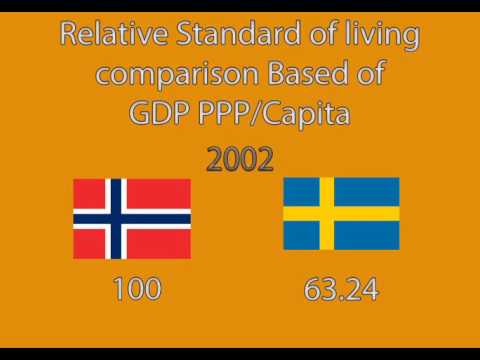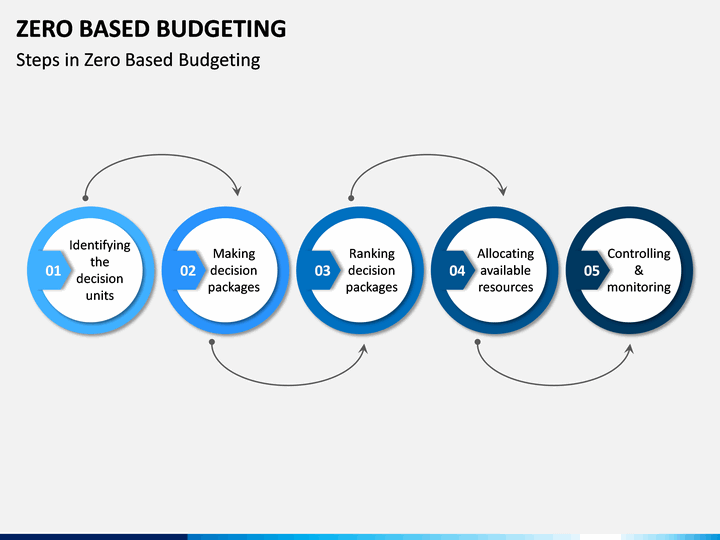Content

Under the direct write-off method, 100% of the expense would be recognized not only during a period that can’t be predicted but also not during the period of the sale. The first entry reverses the bad debt write-off by increasing Accounts Receivable (debit) and decreasing Bad Debt Expense (credit) for the amount recovered. The second entry records the payment in full with Cash increasing (debit) and Accounts Receivable decreasing (credit) for the amount received of $5000.

Let’s say that on April 8, it was determined that Customer Robert Craft’s account was uncollectible in the amount of $5,000. Bad debt usually refers to an account that has ceased to earn income for a company because of late payments or non-payments, and doubtful debt is more severe and relates to accounts that may never be collected. Therefore, it would be incorrect to charge it as a bad debt to the profit and loss account for 2015. Instead, it must be charged against the profit and loss account for 2014. Bad debt is an amount of debt that a business fails to recover from its debtors.
Is Bad Debt an Expense or a Loss?
Allowance for doubtful accounts falls under contra assets and not the current assets section. A contra-asset account means its balance will either be zero or negative (credit balance). With collaborative AR, you can ease communication with not only customers but also members of your sales team. Giving Sales access to customer payment history and cash flow data also helps them make more informed credit decisions. A collaborative accounts receivable solution—such as Versapay—uses automation and cloud-based collaboration technology to get customers, sales, and AR on the same page. The result from your calculation in the percentage of receivables method is your company’s ending AFDA balance for the end of the period.
To estimate the amount a report called Accounts Receivable Aging Report, which breaks up the Accounts Receivable by the amount of time they have been sitting in the books, is used. The report categories are usually Current, 1-30 Days, Days, days, and over 90 days. Using the sub-totals in this report, a percentage deemed uncollectible is assigned to each category, and from this comes the total Allowance for Doubtful Accounts estimate. The Allowance Method is used to estimate the amount of uncollectible A/R for an accounting period before the actual amount is actually known. It is an adjustment made at the end of the month based on calculations to be discussed later in this tutorial.

Instead, the entry to record the write off of an uncollectible account reduces both Accounts Receivables and the Allowance for Bad Debts. When the balance on allowance for doubtful accounts is credited, the bad debt expenses are debited. The allowance for doubtful accounts varies widely from industry to industry. Since it is an estimate of the bad debt expense a company expects to incur, days sales outstanding (DSO) also plays a vital role in its calculation. In other words, the higher the DSO of a company, the higher its allowance must be. Bad debt is an inherent risk for many industries, so they must factor in the provisions for bad debt while preparing their financial budget.
An account that is 90 days overdue is more likely to be unpaid than an account that is 30 days past due. The Direct Write-Off method, though often used for tax purposes, is generally not used for financial reporting. It works by directly writing-off bad debt expense from accounts receivable into the expense account. Whenever a company is sure a certain account balance is uncollectible, it will debit bad debt expense and credit accounts receivable for the amount.
The accounts receivable aging method is a subset of the percentage of receivables method. Here instead of using one average value to determine your percentage of uncollectible receivables, you’ll assign a collection probability to each of your AR aging categories. Every business assumes the risk of non-payment when offering sales on credit. Bad debt expense (BDE) helps you record the impact uncollectible accounts have on your bottom line. The understanding is that the couple will make payments each month toward the principal borrowed, plus interest.
What is bad debt recovery?
When a bad debt is incurred, regardless of when it arose, the bad debt expense account should be debited. At the end of the year, we should simply adjust the provision for bad debts to the required level. Therefore, the total debit to Year 2015’s profit and loss account in respect of bad debts would be $1,320 (written off as bad debts) plus $5,500 (increase in provisions for bad debts), amounting to $6,820. At the end of Year 2015, since we need to raise the provisions for bad debts to 2% of debtors (i.e., $7,000), we will need to debit Year 2015’s bad debts expense account with $5,500 (i.e., $7,000 less $1,500).
A reliable AR automation solution can help you achieve better cash flow, lower bad debt, and improve profits by analyzing customer behavior, risk, and past data. Now, let’s say you want to write off $10,000 in bad debt for your business. In that case, the allowance for doubtful accounts will be debited, and accounts receivable will be credited.

Consider a company going bankrupt that can not pay for all of its bills. Some of the people it owes money to will not be made whole, meaning those people must recognize a loss. This situation represents bad debt expense on the side that is not going to collect the funds they are owed.
How to Estimate Accounts Receivables
The good news is you can minimize bad debts by optimizing the way you manage your collections. But then realizes that only $100,000, or 1%, was actually bad debt, then the next month it will adjust the percentage to journal entries for bad debts lower the amount of expected bad debt. Suppose that out of $5,420 written off as bad debts in Year 2015, $4,100 is related to Year 2014. This means that only $1,320 ($5,420 less $4,100) is related to Year 2015.
There is no allowance, and only one entry needs to be posted for the entry receivable to be written off. You may notice that all three approaches use the same accounts for the adjusting entry; only the approach changes the financial outcome. Also note that it is a requirement that the estimation approach be disclosed in the notes of financial statements so stakeholders can make informed decisions.
However, based on the past history of the firm, it needs to be charged against the Profit and Loss Account of the firm. Learn how Versapay’s collaborative AR software minimizes your company’s bad debt expenses by streamlining collections and avoiding miscommunications that often lead to late payments. In accrual accounting, companies recognize revenue before cash arrives in their accounts and must record expenses in the same accounting period the revenue originated. Units should consider using an allowance for doubtful accounts when they are regularly providing goods or services “on credit” and have experience with the collectability of those accounts. The following entry should be done in accordance with your revenue and reporting cycles (recording the expense in the same reporting period as the revenue is earned), but at a minimum, annually.
Record the payment by increasing the cash account with a debit and decreasing the accounts receivable account with a credit. In the case of the Allowance for bad debts, it is a contra account that is used to reduce the Controlling account, Accounts Receivable. At the end of an accounting period, the Allowance for bad debts reduces the Accounts Receivable to produce Net Accounts Receivable. Note that allowance for bad debts reduces the overall accounts receivable account, not a specific accounts receivable assigned to a customer. Because it is an estimation, it means the exact account that is (or will become) uncollectible is not yet known.
Bad Debts Recovered:
The term “bad debt provision” refers to creating an asset account that reflects credit balance, which, coupled with the accounts receivable, captures the net realizable value of the company’s debtors. Bad debt provisions are also known as an allowance for doubtful accounts, bad debts, or uncollectible accounts. Continuing our examination of the balance sheet method, assume that BWW’s end-of-year accounts receivable balance totaled $324,850. This entry assumes a zero balance in Allowance for Doubtful Accounts from the prior period. BWW estimates 15% of its overall accounts receivable will result in bad debt.
- The balance sheet aging of receivables method estimates bad debt expenses based on the balance in accounts receivable, but it also considers the uncollectible time period for each account.
- For many different reasons, a company may be entitled to receiving money for a credit sale but may never actually receive those funds.
- The next month, if the uncollectible amount was more or less than expected, then an adjustment will be made that keeps the allowance at the estimated amount.
- Using the sub-totals in this report, a percentage deemed uncollectible is assigned to each category, and from this comes the total Allowance for Doubtful Accounts estimate.
The most prevalent approach — called the “percent of sales method” — uses a pre-determined percentage of total sales assumption to forecast the uncollectible credit sales. The allowance method estimates the “bad debt” expense near the end of a period and relies on adjusting entries to write off certain customer accounts determined as uncollectable. The Allowance for Doubtful Accounts is a contra-asset account that estimates the future losses incurred from uncollectible accounts receivable (A/R). After reversing your bad debt journal entry, you also need to record the income. You can debit your Cash account and credit your Accounts Receivable account.
There are instances where companies assume that a certain percentage of their sales would become doubtful debt and subtract that amount from their revenue. Typically, companies estimate the amount of bad debt based on the historical trend. As of January 1, 2018, GAAP requires a change in how health-care entities record bad debt expense. Before this change, these entities would record revenues for billed services, even if they did not expect to collect any payment from the patient.
- To avoid an account overstatement, a company will estimate how much of its receivables from current period sales that it expects will be delinquent.
- If a sale on credit turns out to be uncollectible, in the cash method there isn’t a need to cancel out the receivable with the bad debt expense.
- Therefore, the total debit to Year 2015’s profit and loss account in respect of bad debts would be $1,320 (written off as bad debts) plus $5,500 (increase in provisions for bad debts), amounting to $6,820.
- The matching principle requires that expenses be matched to related revenues in the same accounting period in which the revenue transaction occurs.
Without such adjustments being made during the preparation of financial statements, the numbers shown in the firm’s final accounts will not be accurate. Allowance for doubtful accounts is a credit account, meaning it can be either zero or negative. It records a decrease in the value of assets or an increase in liabilities. For the smaller accounts, the business then uses the historical percentage method. The Pareto analysis method is generally used by companies that have only a few large accounts. There are several other methods like Risk classification, Historical percentage, and Pareto analysis used to calculate the allowance for doubtful accounts.
The direct write-off method delays recognition of bad debt until the specific customer accounts receivable is identified. Once this account is identified as uncollectible, the company will record a reduction to the customer’s accounts receivable and an increase to bad debt expense for the exact amount uncollectible. Unlike the balance sheet method, this method ignores the existing balance in the Allowance for Bad Debt account and will simply continue to add the estimate based on the sales amount. If the estimate turned out to be inaccurate, then the percentage rate used to estimate bad debts will be adjusted for future estimates. For example, if 2% was estimated, but only 1% actually turned into bad debt, perhaps 1.5% or just 1% will be used to estimate bad debt going forward. The Percentage of Sales, also known as the income statement method (because sales are reported on the income statement), calculates the Allowance for Bad Debt as a percentage of total sales.

